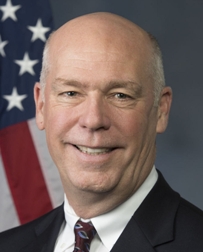2024 to Have Fewest Gubernatorial Incumbents on the Ballot Since the 1800s
For the first time in a presidential or midterm election cycle since at least 1900, less than 30 percent of states holding gubernatorial elections will feature incumbents

But one interesting aspect about this cycle’s elections for governor is the unusually low number of incumbents who will be on the ballot.
In fact, 2024 will have the lowest percentage of governors (as well as lowest number) seeking to hold their office in any midterm or presidential election cycle since the turn of the 20th Century.
Of the 11 states conducting elections this November, five have governors who are term-limited: Delaware (Democrat John Carney), Indiana (Republican Eric Holcomb), Missouri (Republican Mike Parson), North Carolina (Democrat Roy Cooper), and West Virginia (Democrat-turned-Republican Jim Justice).
Three other states are run by governors who chose not to seek another term: New Hampshire Republican Chris Sununu, North Dakota Republican Doug Burgum, and Washington Democrat Jay Inslee.
That leaves just two governors who have announced they wish to keep their jobs (Republicans Greg Gianforte of Montana (pictured above) and Spencer Cox of Utah) and one who has not yet settled on his reelection plans (popular Vermont Republican Phil Scott).
[Scott’s filing window to appear on the August Republican primary ballot is April 22nd through May 30th].
Even under the assumption that Scott will ultimately opt to campaign for a fifth term, incumbents in a maximum of only three of 11 states (27.2 percent) will be running for another term in 2024 – the lowest percentage and number in any midterm or presidential election cycle since at least 1900.
Smart Politics examined the nearly 2,000 gubernatorial elections conducted since 1900 and found that more than half involved incumbents (1,129 of 1,992 or 56.3 percent).
All but four of the 63 midterm or presidential election cycles saw governors run for another term in at least 40 percent of the states. The four cycles with the lowest percentage of gubernatorial incumbents were:
- 1900: 11 of 34 states (32.4 percent)
- 1920: 12 of 36 states (33.3 percent)
- 1992: Four of 12 states (33.3 percent)
- 2010: 14 of 37 states (37.8 percent)
On the other end of the spectrum, the high water mark in the 20th and 21st Centuries came in 1980 when 12 of 13 governors sought another term (92.3 percent).
In that cycle, only term-limited Indiana Republican Otis Bowen sailed off into the political sunset (until being named Secretary of Health and Human Services under Ronald Reagan in 1985).
More than 80 percent of elections for governor included incumbents in three other midterm or presidential election cycles: in 1962 (28 of 35, 80.0 percent), 2014 (29 of 36, 80.6 percent), and 2020 (nine of 11, 81.8 percent).
Since 2000, a total of 196 of 329 gubernatorial contests involved incumbents (59.6 percent).
Follow Smart Politics on X/Twitter.

[…] off an election cycle with the lowest percentage of gubernatorial incumbents since at least 1900, the 2026 cycle could see a plethora of very seasoned incumbents on the […]